Market
‘Why Was It So Hard to Get Here?’ European Collectors Are at Last Buying Up Work by African American Artists at Art Basel
Artists including Sam Gilliam, McArthur Binion, and Barkley Hendricks are in high demand this year in Basel.
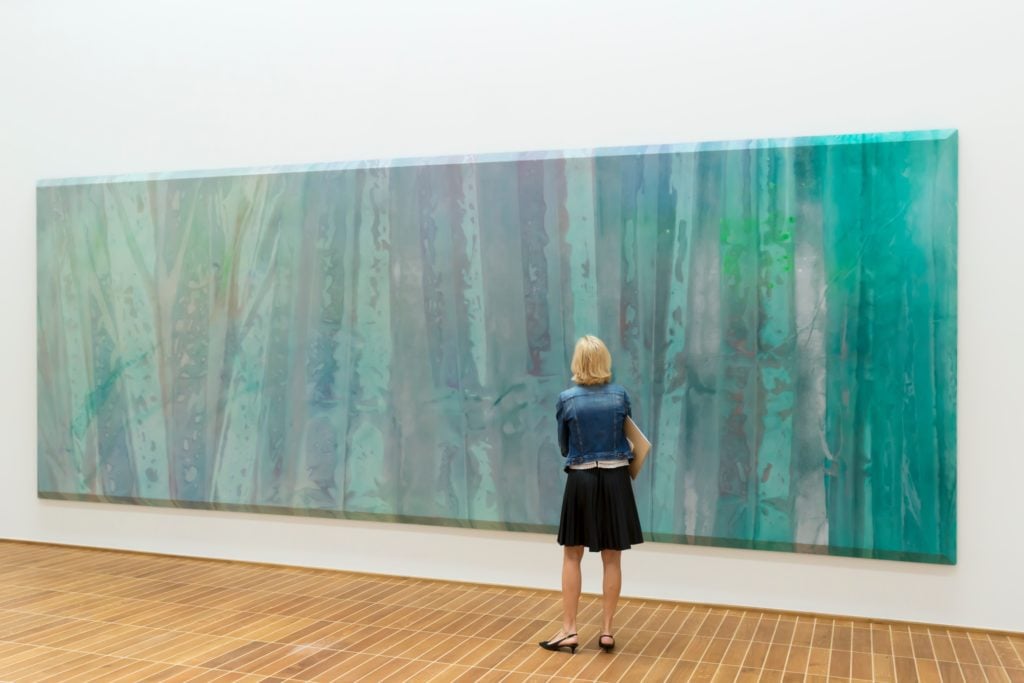
Artists including Sam Gilliam, McArthur Binion, and Barkley Hendricks are in high demand this year in Basel.

Julia Halperin

Art Basel, the topflight Swiss fair that opens to the public today, is best known for presenting the bluest of blue-chip European art. But this year, the event has a bit of an American flavor thanks to prominent—and highly sought after—work by African American artists. Beyond the convention center, the city’s Kunstmuseum is hosting solo exhibitions by two black American artists, Sam Gilliam and Theaster Gates.
At a time when the market is rapidly recalibrating price points for artists who have been undervalued for decades, and as museums are rushing to fill gaps in their collections, dealers say Art Basel can be an important opportunity to provide these historically overlooked artists with European exposure that can have a lasting impact.
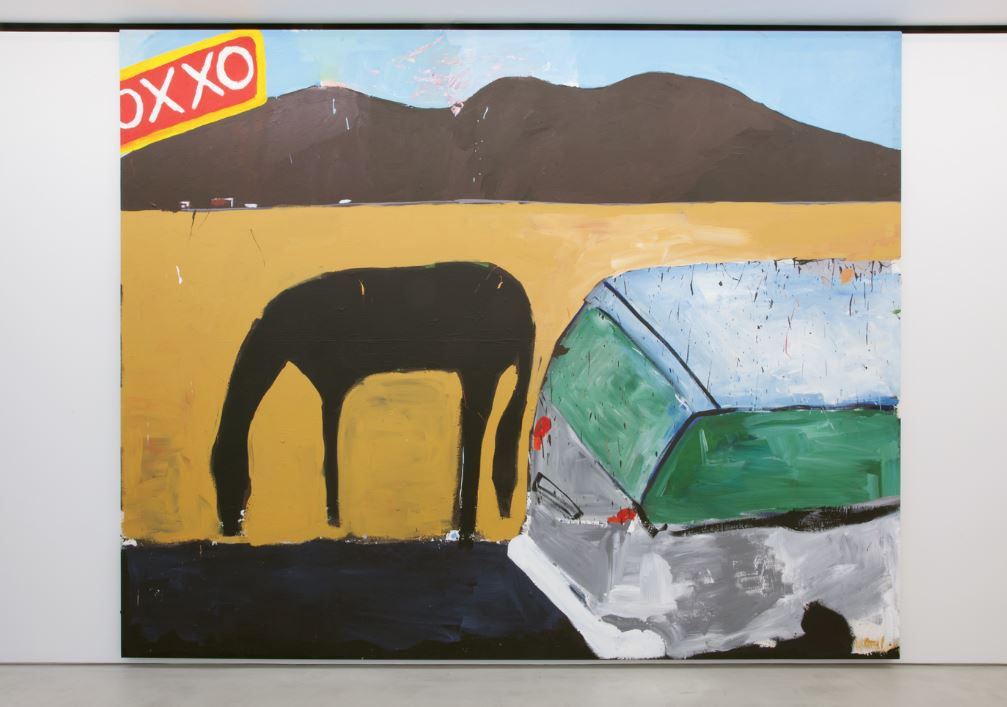
Henry Taylor’s OXXO–Somewhere in Mexico but close to the BORDER (2015–18). Image courtesy of Blum & Poe.
During the fair’s VIP preview days, Blum & Poe sold a large, recently completed painting of the US-Mexico border by Henry Taylor, priced at $175,000, to Paris’s Louis Vuitton Foundation. David Kordansky reported that it sold two works currently on view in Gilliam’s show at the Kunstmuseum—one listed at $2 million to a European institution and another for $1.4 million to a European collector.
Meanwhile, Alexander Gray sold a vivid 1972 abstract composition by Gilliam to a German art foundation and Mnuchin Gallery sold a crimson drape painting from 1970 to a European collector who had not previously owned any work by Gilliam. It had been in the same private collection for more than 45 years.
“More and more I’m noticing there are Europeans that want to buy the work,” says Tim Blum of Blum & Poe. The market for work by African American artists “is at an inflection point globally right now—that’s a fact. And it’s not going away.”

Sam Gilliam’s Patch (1970) at Mnuchin Gallery. Photo: Julia Halperin.
The fair arrives on the heels of P. Diddy’s much-discussed purchase of Kerry James Marshall’s 1997 painting Past Times at Sotheby’s last month for $21.1 million, a new auction record for a living African American artist. Meanwhile, a group of 42 works donated by artists to help fund an expansion of the Studio Museum in Harlem sold for a total of $20.2 million, double their overall high estimate.
Perhaps it is unsurprising, then, that while work by African American artists at the fair represents three generations and spans radically different genres ranging from abstraction to virtual reality, some in the art market—always searching for categorizations—have been quick to group them together. “There are dealers out there consciously looking for African American artists—I hear dealers say it,” Blum says.
“There are those who have been committed and there are those who see financial opportunity,” Gray says. “It mirrors the rest of the world.”
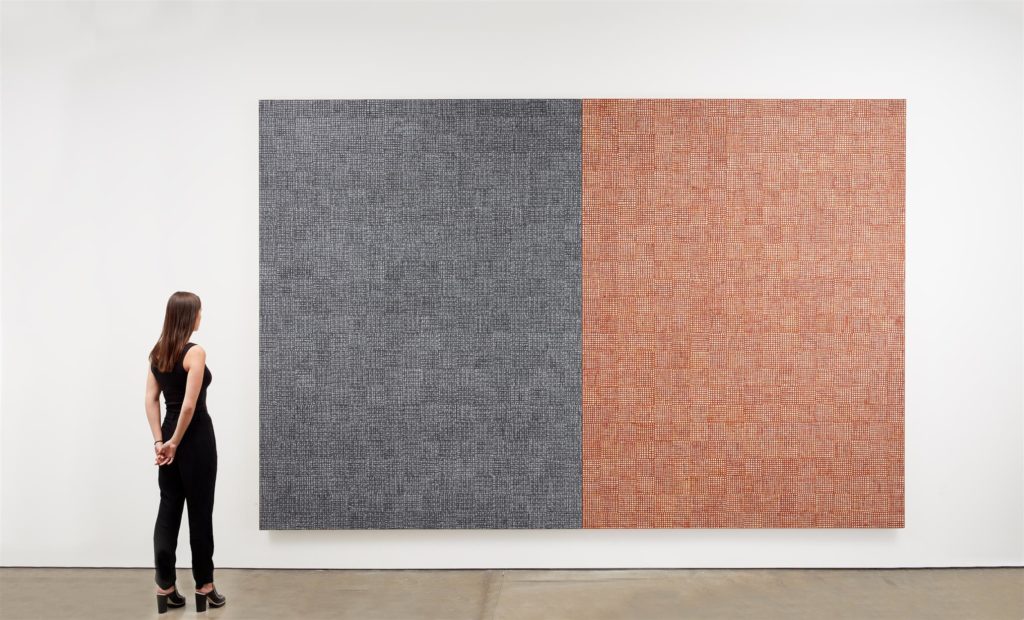
Photo: Elizabeth Smarz. Courtesy of the artist and Lehmann Maupin.
Prices are undeniably rising. At the fair, two paintings by Marshall at Jack Shainman Gallery and David Zwirner sold for a combined price estimated at $10 million, according to The Art Newspaper. Meanwhile, Mark Bradford paintings from 2001 and 2017 sold at Mnuchin Gallery and Hauser & Wirth for prices listed at $3.85 million and $2.5 million, respectively. Shainman sold a 1975 portrait by Barkley Hendricks for $1.75 million. And Lehmann Maupin Gallery sold nine works by McArthur Binion, including a monumental work in Art Basel’s Unlimited section, for prices ranging from $70,000 to $450,000.
The growing visibility and demand for established artists like these “is having a ripple effect for emerging and mid-career artists,” says the San Francisco-based dealer Karen Jenkins-Johnson, who recently opened up a project space in Brooklyn to present the work of young and less established black artists.
It is also boosting the careers of those who preceded today’s wildly popular contemporary names. Blum notes that the recent spike in interest in Marshall has led some collectors and institutions to re-examine the late Robert Colescott, a painter of riotous tableaux who Marshall has cited as an influence and whose estate the gallery began representing late last year. At the fair, the gallery sold two works by Colescott from the ’70s ranging in price from $200,000 to $225,000.
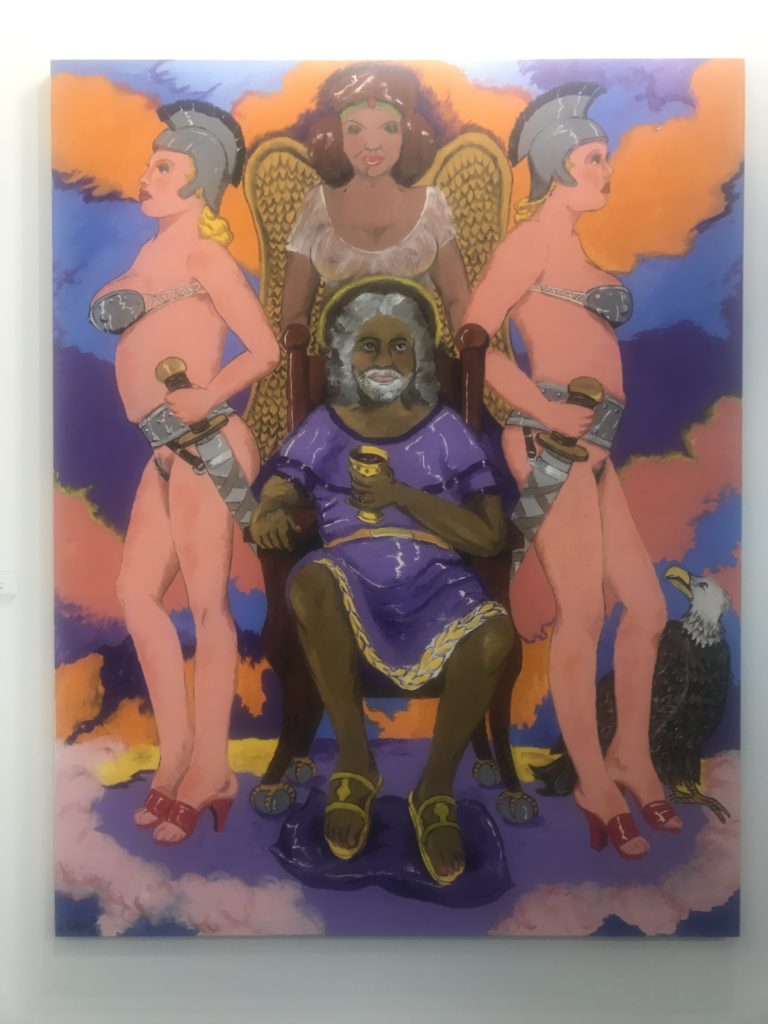
Robert Colescott’s Oh Byzantium, Oh! (1978) at Blum & Poe. Photo: Julia Halperin.
Although the skyrocketing auction prices are a more recent phenomenon, many note that this growing recognition is the result of a number of factors that have deep roots, including hard work of international curators and advocacy from the artists themselves.
Alexander Gray credits “a generation of curators, dealers, and collectors who came of age at the peak of multiculturalism and the AIDS crisis and [who] are now leading the charge,” including scholars like the Studio Museum director Thelma Golden and the former Metropolitan Museum of Art curator Lowery Stokes Sims.
Major international museum exhibitions, like Tate Modern’s “Soul of a Nation: Art in the Age of Black Power” and the current Sam Gilliam show in Basel, as well as recent projects led by non-American curators such as the National Gallery’s Lynne Cooke, have also gone a long way to revise the canon. “Sometimes it takes validation from abroad to alert us to an art form previously left in the margins of American art history,” says Max Anderson, the president of the Souls Grown Deep Foundation.
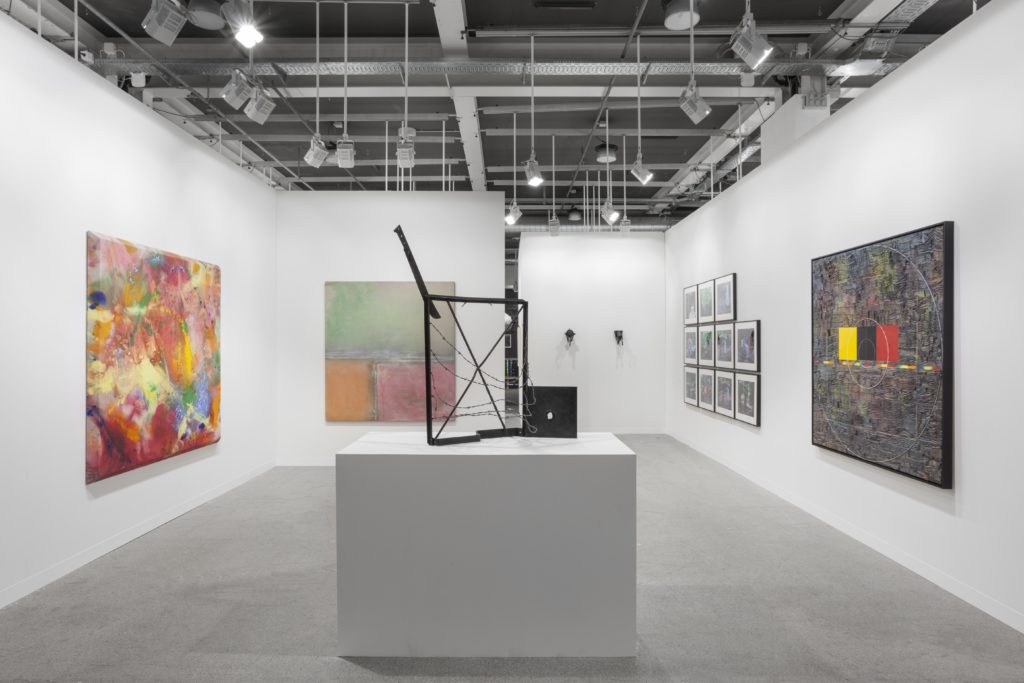
Alexander Gray Associates, installation view, Art Basel 2018. Image courtesy of Alexander Gray Associates.
But curators aren’t the only ones who have been pushing for re-evaluation. “None of this was a blip on the radar before a new generation of younger black artists started talking about these artists,” Gray says.
Indeed, the international powerhouse artist Rashid Johnson organized an exhibition of the elder Gilliam’s paintings at David Kordansky Gallery in 2013, soon after the gallery began to represent him. At the fair, Kordansky sold a total of 12 works by Gilliam listed at prices ranging from $60,000 for works on paper to $2 million, according to the gallery. (The latter figure is more than double the artist’s auction record of $885,000, set in March.) When the gallery first brought drape paintings by Gilliam to an art fair in 2014, they were priced at around $300,000.
Several dealers point to a growing number of wealthy African American collectors who are helping to set new price points. In addition to P. Diddy’s record-setting bid, last month’s New York auctions saw producer Swizz Beatz win Lynette Yiadom-Boakye’s painting, An Assistance of Amber (2017), for $555,000.
Still, some caution that the top end of the market is still not particularly welcoming to less famous newcomers who don’t have existing art-world connections. “There are many dealers who hesitate to sell to collectors they don’t know,” one gallerist points out. “What does that mean for an aspiring African American collector?”
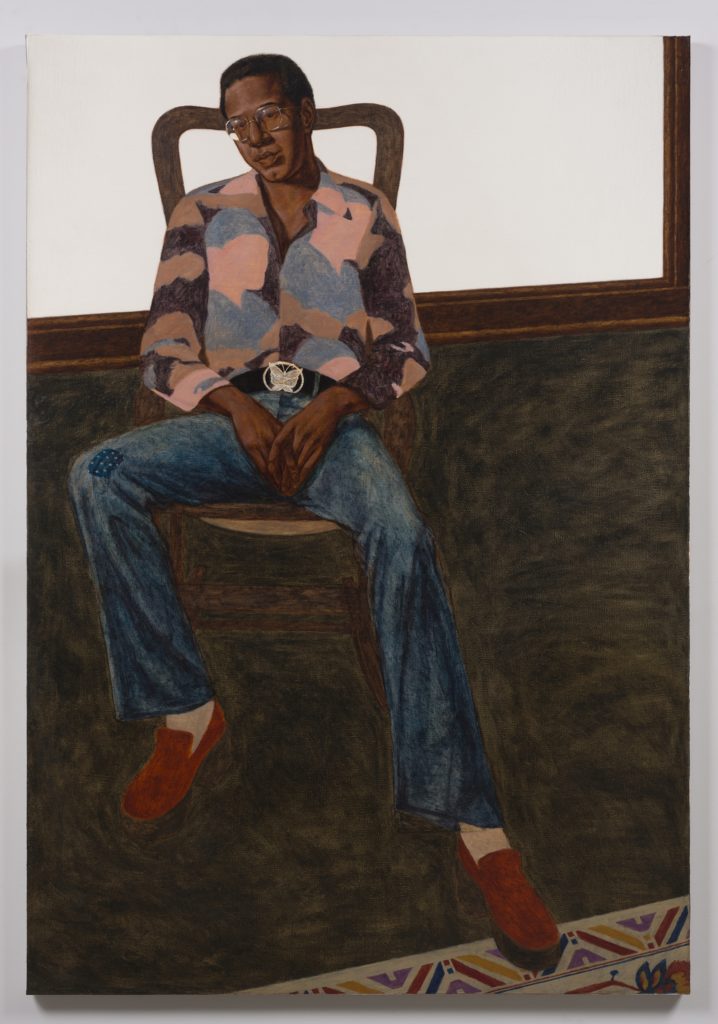
Barkley L. Hendricks’s Greg (1975). Image courtesy of Jack Shainman Gallery.
Moreover, while this moment might represent the most concentrated international recognition of African American artists, it is hardly the first time. A significant number of the works in Gilliam’s Kunstmuseum show were acquired by major museums soon after they were made. “I’m excited about the critical acclaim and international reception, but I’m also reminded that the arc of our history is long and cyclical,” says the collector Pamela Joyner, who has built a 400-strong collection of works by primarily African American artists over the past 20 years. “If you’re me, one’s job is never done.”
Indeed, art history—and the art market—is as much a story of power as one of creativity. “One cannot underestimate the systems of institutional canon formation and institutional exclusion,” says Tate curator Zoe Whitley, who co-organized “Soul of a Nation.” “At the height of Abstract Expressionism, the big names included Twombly, Rauschenberg and Johns—undeniably great artists but we must recognize they were collected by equally undeniably powerful individuals. Works by those three artists alone were at the time in exponentially greater international circulation to works by their generational peers Gilliam, [Frank] Bowling, or numerous other artists who are now belatedly garnering their scholarly and institutional due.”
There is more change still to come—the re-evaluation of these artists hasn’t actually been going on for all that long compared to the amount of time they have been overlooked. Gray recalls that when he brought a solo presentation of Jack Whitten’s work to Basel in 2010, he returned home with most of what he brought.
“It’s great people are interested,” the dealer Jack Shainman says. “But the big question is why did it take so long, and why was it so hard to get here?”